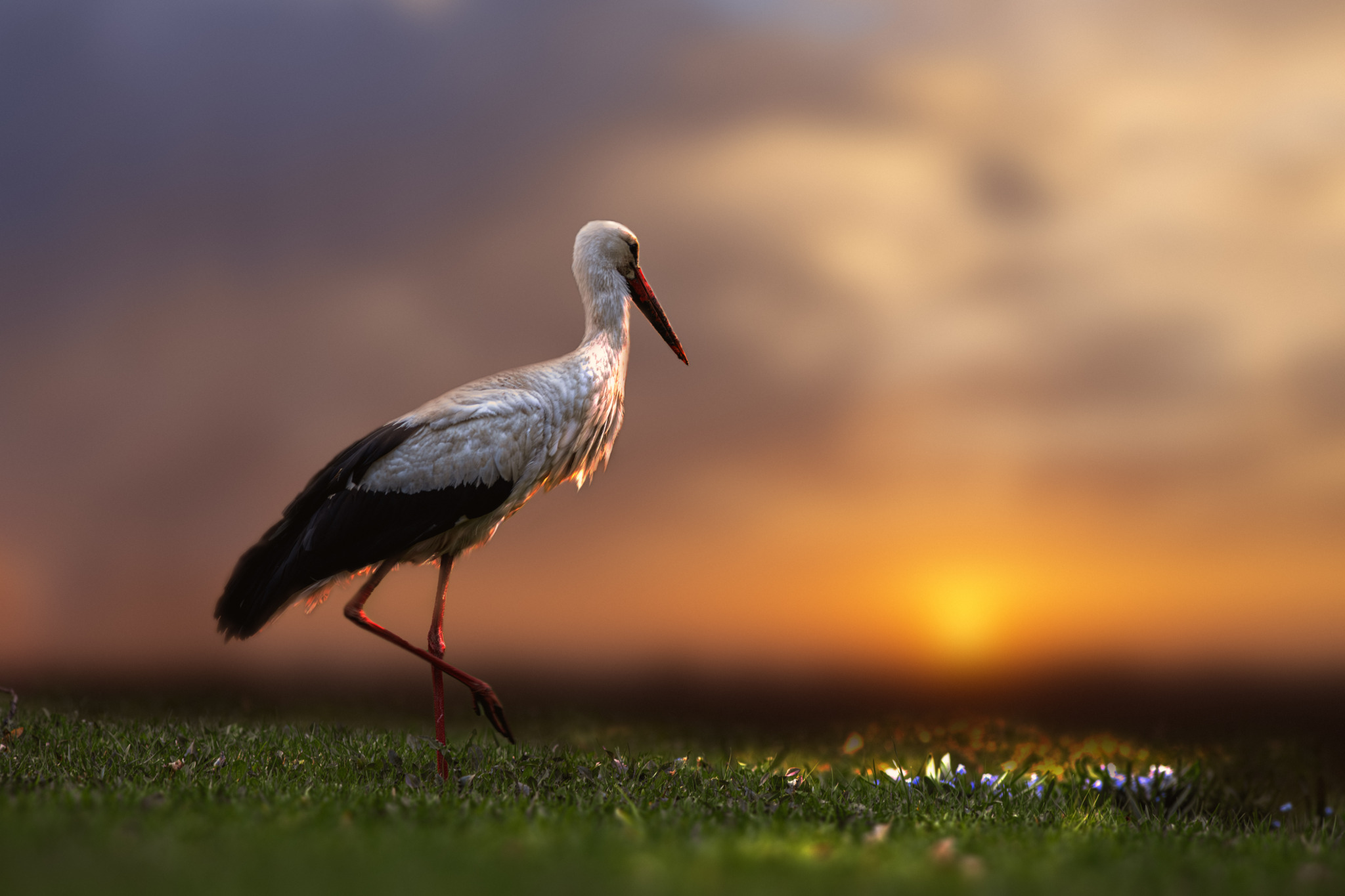White Stork (Ciconia ciconia)
The White Stork is one of Europe’s most iconic large birds, famous for its striking appearance, impressive migrations, and strong association with human culture and folklore — often symbolizing good luck and fertility. This tall, graceful bird is a familiar sight nesting on rooftops and chimneys across its range.
🐦 Identification
- Height: 100–125 cm
- Wingspan: 155–215 cm
- Weight: 2.5–4.5 kg
Appearance:
- Plumage: Pure white body with black primary wing feathers
- Bill: Long, straight, bright red
- Legs: Long, red or pinkish-red
- Eyes: Dark, with bare skin around the eye
- Flight: Broad wings with deep, slow flaps; often seen soaring on thermals with neck extended and legs trailing behind
Both sexes look similar; juveniles have duller bills and legs.
🌿 Habitat
- Prefers open habitats with wetlands and grasslands, including:
- Meadows
- Farmlands
- Marshes
- River valleys
- Near villages and towns
Often nests in close association with humans, especially in Europe.
🍽️ Diet
Carnivorous and opportunistic feeder:
- Insects (grasshoppers, beetles)
- Amphibians (frogs, toads)
- Reptiles (lizards, snakes)
- Small mammals (rodents)
- Birds and bird eggs
- Fish
- Occasionally scavenges carrion
Hunts by walking slowly and striking quickly at prey with its bill.
🔁 Behavior & Life Cycle
Breeding:
- Breeding season: Spring to summer
- Nest: Large platform of sticks, reused and added to each year, often on:
- Trees
- Rooftops
- Chimneys
- Utility poles
- Clutch size: 3–5 eggs
- Incubation: ~33–34 days
- Both parents care for chicks; fledging occurs after ~60–70 days
Migration:
- Long-distance migrant:
- Breeds in Europe and migrates to sub-Saharan Africa for winter
- Avoids Mediterranean Sea by taking eastern or western flyways (via Middle East or Gibraltar)
Social behavior:
- Outside breeding season, often gathers in large flocks during migration
- Typically monogamous during the breeding season
🌍 Distribution
- Breeds in:
- Most of Europe
- Northwest Africa
- Western Asia
- Winters in:
- Sub-Saharan Africa (main wintering area)
- Some populations winter in India and the Middle East
Reintroduction programs have restored populations in some parts of Europe where they had previously declined.
🧬 Interesting Facts
- Associated with many myths and legends — especially the tale of storks delivering babies.
- Sometimes forms loose colonies where multiple pairs nest close together.
- They are silent most of the time, but during breeding they perform bill clattering — a rapid snapping of the bill used in courtship and communication.
- Historically benefited from human settlement but also suffered during periods of intensive farming and wetland drainage.
🛡️ Conservation Status
- IUCN Red List: Least Concern
- European populations have recovered well due to:
- Protection of wetlands
- Installation of artificial nesting platforms
- Conservation and public awareness programs
Major threats still include:
- Habitat loss (especially wetland drainage)
- Power line collisions during migration
- Pesticide use affecting food sources
The White Stork (Ciconia ciconia) remains a symbol of renewal and good fortune in many cultures. Its spectacular migrations, huge nests, and elegant flight make it a favorite among birdwatchers and nature lovers across continents.
Views: 2775
Subscribe to the newsletter:
